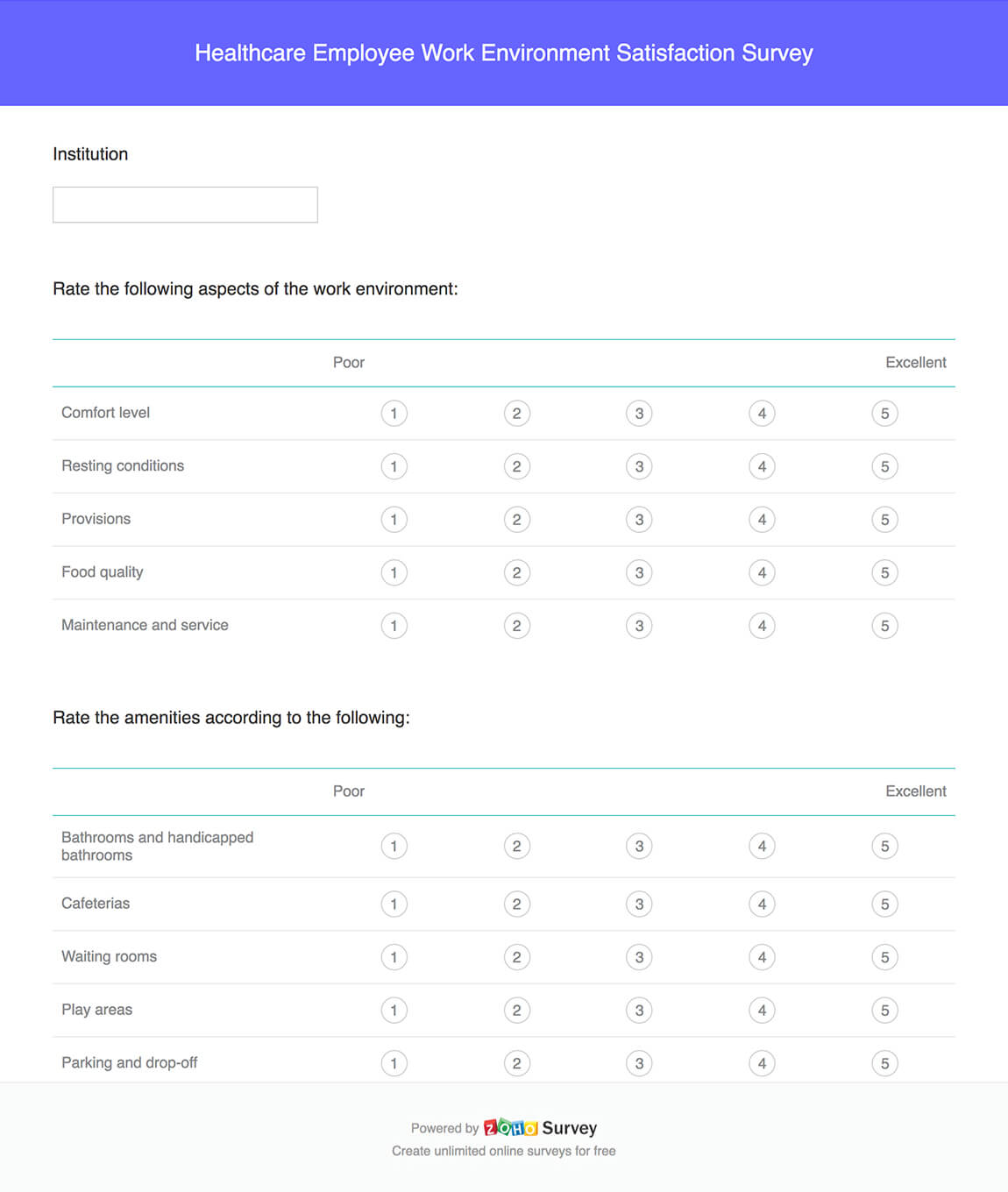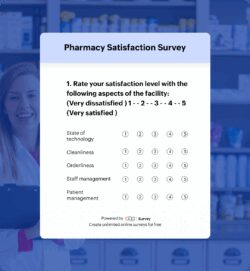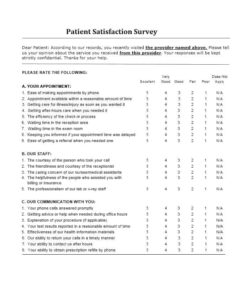In the demanding world of healthcare, where compassion and expertise meet intense pressures, the well-being of employees is not just a human resources concern; it is fundamental to patient care and organizational success. A satisfied workforce is more engaged, more productive, and less prone to burnout, directly impacting the quality of service provided to patients. Understanding what truly motivates or demotivates your team is the first crucial step toward building a thriving work environment, fostering loyalty, and ensuring staff retention in a highly competitive sector.

That is where a thoughtfully designed healthcare employee satisfaction survey template becomes an invaluable tool. It is more than just a questionnaire; it is a strategic instrument for listening to your most valuable asset your people. By systematically gathering feedback, organizations can identify areas of strength to celebrate and leverage, as well as pinpoint challenges that need immediate attention, helping to shape policies that genuinely support staff and enhance overall morale. Using a specialized template ensures you are asking the right questions relevant to the unique environment of healthcare professionals.
Why Understanding Employee Satisfaction is Critical in Healthcare
Employee satisfaction in healthcare goes far beyond just happy staff; it is intrinsically linked to patient safety, clinical outcomes, and the very sustainability of a healthcare institution. When nurses, doctors, administrative staff, and support personnel feel valued, respected, and supported, they are more likely to deliver exceptional care. Conversely, dissatisfaction can lead to high turnover rates, increased errors, and a decline in the quality of patient experience, creating a ripple effect that impacts everyone from the front desk to the operating room. Regular, anonymous surveys provide a safe space for employees to express their honest opinions without fear of reprisal, offering insights that might otherwise remain hidden.
Think about the unique stressors faced by healthcare workers: long shifts, emotional labor, exposure to illness, and constant decision-making under pressure. These factors make it even more important to actively monitor and address their needs. A robust employee satisfaction survey helps uncover issues like inadequate staffing, lack of professional development opportunities, unfair compensation, or ineffective leadership before they escalate into major problems. It acts as an early warning system, allowing management to intervene proactively, implement targeted solutions, and demonstrate a genuine commitment to their team members wellbeing.
An effective healthcare employee satisfaction survey template should cover a broad spectrum of topics to provide a holistic view of employee sentiment. It is not just about asking if people are happy, but rather delving into the specific elements that contribute to or detract from their satisfaction. This comprehensive approach ensures that all facets of the employee experience are considered, from daily operational challenges to long-term career aspirations, painting a complete picture of the organizational climate. Gathering this diverse feedback empowers leaders to make data-driven decisions that genuinely improve working conditions.
Building a culture where feedback is not just collected but truly valued and acted upon fosters a sense of trust and transparency. When employees see their suggestions lead to tangible improvements, they feel heard and respected, which in turn boosts morale and loyalty. This continuous cycle of feedback and action transforms the workplace into a dynamic environment committed to growth and mutual support, benefiting both the staff and the patients they serve. It reinforces the idea that every voice matters in the collective pursuit of excellent healthcare delivery.
Key Areas to Cover in Your Survey Template
To ensure your survey provides actionable insights, consider including questions that touch upon these critical aspects of the healthcare work environment:
- Workload and Staffing Adequate resources and support to perform duties effectively.
- Compensation and Benefits Fair pay, health insurance, retirement plans, and other perks.
- Leadership and Management Quality of supervision, communication from leadership, and fairness.
- Professional Development Opportunities for growth, training, and career advancement.
- Work-Life Balance Flexibility, scheduling, and support for personal well-being.
- Teamwork and Collaboration Effectiveness of interdepartmental relations and team dynamics.
- Safety and Environment Perceived safety protocols, equipment, and physical workspace.
- Recognition and Appreciation How often and how well employees feel acknowledged for their contributions.
- Culture and Values Alignment with organizational mission and ethical practices.
Implementing Your Survey and Acting on Feedback
Once you have your comprehensive healthcare employee satisfaction survey template ready, the next step is thoughtful implementation. Communication is key: inform your staff about the survey’s purpose, emphasize its anonymity, and explain how the results will be used to bring about positive change. Choosing the right time to launch the survey is also important, avoiding peak periods of stress or major organizational changes that might skew results. Providing easy access through online platforms and ensuring ample time for completion will encourage maximum participation, giving you a robust dataset to work with.
After the data is collected, the real work begins: analysis. Look beyond surface-level percentages to identify underlying trends, common themes, and specific departments or roles where satisfaction levels might differ significantly. Are there consistent concerns about staffing levels in the emergency department, or perhaps a lack of growth opportunities for administrative staff? Segmenting data by department, tenure, or role can reveal critical insights that a general overview might miss. This deep dive helps to pinpoint exact pain points and informs targeted interventions, making your efforts much more effective.
Crucially, an employee satisfaction survey is only valuable if its insights lead to action. Develop concrete action plans based on the feedback received. This might involve creating new training programs, adjusting staffing models, reviewing compensation structures, or enhancing recognition initiatives. It is vital to communicate these planned changes back to your employees, showing them that their voices were heard and that their input is driving tangible improvements. Transparency in this process builds trust and reinforces the idea that their participation matters and that the organization is genuinely committed to their well-being.
Employee satisfaction is not a one-time project but an ongoing commitment. Regular surveying, perhaps annually or bi-annually, allows you to track progress, measure the impact of implemented changes, and adapt to evolving employee needs. This continuous feedback loop helps foster a culture of open communication and continuous improvement, ensuring your healthcare institution remains an attractive and supportive place to work. It reinforces the message that employee well-being is a core value, leading to a healthier, happier, and more productive workforce.
Investing in the satisfaction of your healthcare employees is an investment in the very foundation of your organization. When staff feel supported, valued, and engaged, they are more resilient, more collaborative, and ultimately, more capable of delivering the exceptional care that patients deserve. A structured approach to understanding their needs, like through a well-designed survey, creates an environment where everyone can thrive.
By prioritizing employee well-being and actively responding to their feedback, healthcare institutions can cultivate a positive and sustainable work environment. This not only enhances staff retention and reduces burnout but also directly elevates the quality of patient care and strengthens the overall reputation of your facility as a leader in compassionate service and outstanding employment practices.


